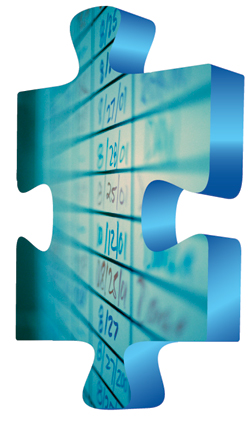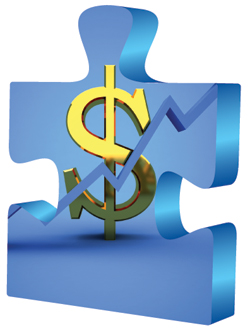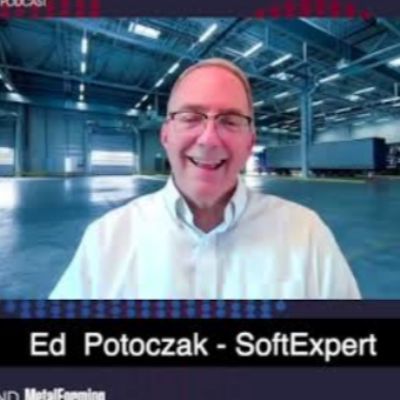To compete against larger companies, many small and nimble software vendors have developed products to meet the unique requirements of specific types of manufacturers. Niche providers, relatively rare as recently as 10 years ago, are abundant today. In just the past two years, for example, we have identified and evaluated ERP software specifically for manufacturers of castings, chemicals, electronics, equipment, food, molded products, primary metals and printed products. We also recently evaluated software for metal-service centers and equipment distributors.
Software buyers are well-advised to consider and compare providers of niche packages with the more generic ERP packages from larger providers. Industry specialization may prove more beneficial than size, substance and breadth of functionality.
Software-as-a-Service
The 2007 to 2009 recession severely cut into new-license sales of the entire ERP software industry, except for those selling on a software-as-a-service (SaaS) basis. In fact, SAAS vendors did quite well during that period, picking up market share from traditional on-premise providers because of the no/low initial license cost.
Today, virtually all ERP providers offer or plan to offer their software through a SAAS model. Potential buyers are well-advised to compare the strategy of outsourcing their ERP system with the traditional on-premise model.
Greater Modularity and Options
During the last 20 years, ERP packages have experienced extensive development in features and functions. Many of the more mature packages now comprise dozens if not hundreds of modules. In the early days of ERP, most packages were sold all inclusively. Today, however, buyers have more flexibility in selecting specific features and modules from their software supplier. In some cases, the software company’s offer different grades or versions of modules, a “good-better-best” strategy. This strategy is common in other software specialties, including customer-relationship management (CRM), quality management and sales-order pricing.
 Because of the increased number of choices, we advise ERP-software buyers to:
Because of the increased number of choices, we advise ERP-software buyers to:
• Carefully match their needs with the vendors’ modules; and
• Time the purchase of modules closer to when they can actually be put into full use.
Mobility
Within the last 10 years, ERP-software vendors have met the challenge of providing salesforce-automation tools to field-sales personnel, through their own or third-party CRM packages. Most recently, the demand for mobile-computing options has increased for executive and operational personnel. Armed with smartphones and tablets, executives, field-service technicians and customer-service personnel also have demanded access to data and applications typically reserved for the back office. Even plant personnel who are on their feet much of the day are asking for mobile apps.
Tablet sales are predicted to eclipse laptop sales in the near future, and smartphones have become ubiquitous business-productivity tools. As such, ERP-software buyers should include the availability of mobile apps as criteria in their purchase decision.
Customization and Personalization
Generally, ERP software written and sold between 1990 and 2005 was highly rigid and required programmer-level skills and source-code access in order to make even minor changes, such as alterations to screen layouts. Many of these first-generation ERP solutions still are used and, in fact, are still being sold. Customizing these software packages is an expensive venture, so buyers either must conform to the software or pay upfront fees to the vendor for every upgrade.
Newer, more modern ERP systems provide greater independence from the software vendor, through customization and personalization tools. These tools allow a company’s’ IT personnel to make substantial changes to the software without requiring programmer intervention and without affecting upgrade paths. This allows adoption of future versions of the software without having to re-do the customizations.
 In addition to this customization tool kit, many ERP systems come with workflow-management tools, which also allow a company to adapt the software to its own, unique business processes. Workflow tools, for example, can interrupt a software process; suspend a transaction and send a notification; suspend a transaction for managerial approval; or route a partially completed transaction to another employee. These tools help coordinate the activities of several employees, working in different areas of a company, on, say, the same record, such as loading a new item in the system. The workflow monitor could route responsibility from engineering to operations to accounting, quickly and paperless.
In addition to this customization tool kit, many ERP systems come with workflow-management tools, which also allow a company to adapt the software to its own, unique business processes. Workflow tools, for example, can interrupt a software process; suspend a transaction and send a notification; suspend a transaction for managerial approval; or route a partially completed transaction to another employee. These tools help coordinate the activities of several employees, working in different areas of a company, on, say, the same record, such as loading a new item in the system. The workflow monitor could route responsibility from engineering to operations to accounting, quickly and paperless.
Note: The features described above may not als benefit every ERP-software buyer. For companies that prefer a low total-cost-of-ownership experience, the best alternative may be a rigid software package that can’t and won’t be customized.
Data-Conversion Tools and Strategies
To upgrade an aging ERP system, ERP-software buyers used to routinely pay programming experts anywhere from $10,000 to $100,000 to convert historical data and important static records like customers, items and BOMs from their old system to the new system. Often, the cost to convert historical transaction data outweighs the benefits.
Today, most ERP vendors offer data-import routines, templates and tools that simplify the process and reduce the data-conversion costs. If data can be extracted from the old system into a simple Access database or Excel spreadsheet, these tools allow the data to be copied into the new system quickly and with integrity checks.
Many companies, however, for a variety of reasons, still choose not to convert transactional data. Instead, they elect to export historical data into separate databases or into a set of spreadsheets and start history anew with the new ERP system. Or, in some cases historical data is copied to a data warehouse where it is appended later with new data from the new system. With the historical data safely stored, a company then can access a slew of analytical tool, including simple office tools, in order to analyze historical data outside the ERP software.
Mature yet Evolving
Although ERP software has reached market maturity, the systems continue to evolve to meet the business-software needs of manufacturers. In fact, these systems still are the largest software investment for most manufacturers. Functionality has certainly increased since the programs released in the early 1990s, but for the most part, the functions available in those early ERP systems haven’t changed dramatically. We’ve simply seen feature expansion. Suppliers have developed new features to:
• Accommodate multinational trade;
• Simultaneously deal with make-to-stock and make-to-order supply-chain strategies;
• Improve scheduling of production facilities and resources;
• Better handle complex costing processes; and
• Provide better financial reporting. MF
Scott Holter will provide a keynote presentation at this year’s Manufacturing ERP Experience, slated for October 3-4, 2012, in Cleveland, OH. Learn more and register to attend at www.metalformingmagazine.com/ERP.
See also: X
Technologies: Management, Quality Control
![]() The acronym ERP (Enterprise Resource Planning) for business software has been around for nearly 20 years. ERP replaced short-lived terms like accounting Software and MRP software, whose definitions were too narrow to allow for technology evolution. Because ERP includes the word “enterprise,” the concept has evolved during the past two decades, so much so that companies running ERP software purchased in the early or mid 1990s might be stunned by the breadth and depth of features included in modern, state-of-the-art ERP systems.
The acronym ERP (Enterprise Resource Planning) for business software has been around for nearly 20 years. ERP replaced short-lived terms like accounting Software and MRP software, whose definitions were too narrow to allow for technology evolution. Because ERP includes the word “enterprise,” the concept has evolved during the past two decades, so much so that companies running ERP software purchased in the early or mid 1990s might be stunned by the breadth and depth of features included in modern, state-of-the-art ERP systems.










 Podcast
Podcast
